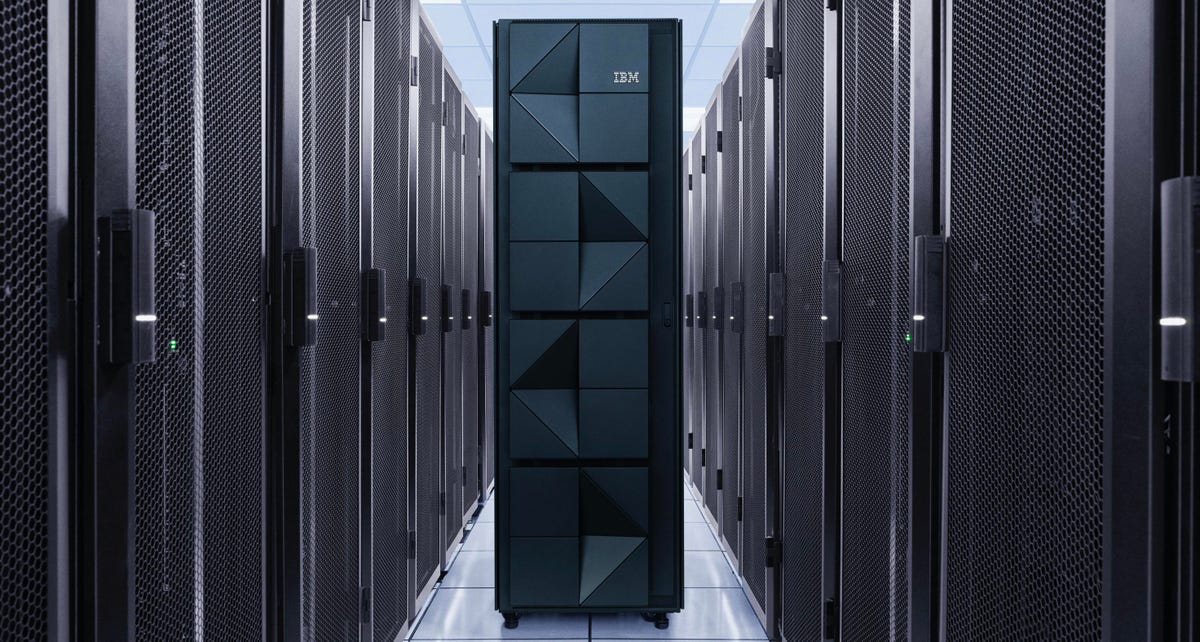[ad_1]
IBM’s latest mainframe model, the z16, has AI built into its silicon
IBM’s mainframe business is growing at a record pace, said Barry Baker, vice president, IBM zSystems & LinuxONE product development at IBM. He disagreed with an Accenture survey of banks, which said that 40% of banks were running on mainframes that were at least 10 years old.
That looks as if Accenture surveyed laggards, Baker said — banks that fell behind on their technology and their skills.
“The z15, our latest offering has been the most successful mainframe in our history measured by growth of usage — 3X growth overall and banking has grown by more than 4X. What Accenture saw was a very narrow set of clients who have underinvested in the platform. When we look at the overall mainframe installed base, and every one of these systems calls home with data, we have a view of how the capacity is being used over time, and 85% of Z capacity is on z14 or newer, computers that are less than five years old.
Barry Baker, vice president IBM zSystems & LinuxONE product development at IBM
“Banking clients tend to be even more current — 90% of our banking clients are on z14 or newer, computers that are less than five years old. The mainframe has proved far more adaptable than people predicted, or than many claim now.”
Since launching the z15 in late 2019, installed MIPS on the platform are up 45% as clients continue to upgrade their technology, add production capacity, and build out cyber resiliency, he added.
“If you look at these waves over last 15 to 20 year, as things come on board and become state of art, like web technology, people said it would have a negative effect on core, but we saw growth. Mobile was very similar as is Cloud. The architecture on the platform is built for elasticity to scale with demand, mobile became another channel.
“Opening interfaces was the problem to be fixed — how do you define right APIs so a mobile app can effectively link to that mission-critical system. We enabled REST APIs on the platform and as soon as our clients take advantage of this it accelerates their mobile strategy.”
Mobile brought less predictable spikes in demand, so five years ago IBM introduced consumption-based costing.
“That was probably more of a hindrance to modernization and adoption than the raw technology — how do I predict my spend?”
Another issue IBM is addressing is Cobol code.
“Many banks have on the order of 100 million lines of Cobol code, which is implementing their core business processes,” said Barry. “In some parts of that code base, the bank doesn’t have a lot of new requirements, and the existing Cobol runs really well. In other parts , they are looking to modernize it workload by workload using new languages, frameworks and patterns.
“Some of that Cobol code has business rules embedded in it. We have seen many clients who want to use a business rules management system, typically Java-based, and they want to integrate that tightly with Cobol.”
Some banks are finding the mainframe provides greater efficiency for the right workload when compared to scale-out or distributed platforms. Barry said IBM is working with a bank that is using an open source, NoSQL database, which they have deployed in a private cloud with 40,000 x86 cores
“We are moving that to IBM zSystems and expect to achieve a 30:1 core consolidation ratio. This will result in significant operational and licensing savings, with substantial performance benefits. “Our platform has been developed from the silicon up to deliver on database workloads. That 30:1 consolidation of cores from x86 to Z delivers a lot of value to our clients — they reduce not only operational and licensing costs, but they achieve a significant performance benefit. It’s also important for sustainability. For IT and purchasing decisions, especially in Europe, sustainability is important in terms of datacenter, cooling and carbon savings.”
IBM has recently announced its new generation of mainframes Z16 which is now shipping.
“We ship a new generation every two and a half years. At any point we have two or three new generations in active development.”
Working at the chip level, IBM has innovated in providing banks, and other customer’s, with features they need. In the z14 they did it with encryption on the chip.
“With the z16 we did it again with AI. Many users are going off the platform for AI inferencing engines which create latency. We have had credit card firms saying they do fraud detection on only a subset of their transactions. With z16 they can embed AI inferencing on every transaction.”
None of the big cloud companies can run mainframes now, he added.
“Some can do emulation, but the major ones are not running mainframes, although we are in active conversations with lots of them.”
[ad_2]
Image and article originally from www.forbes.com. Read the original article here.

